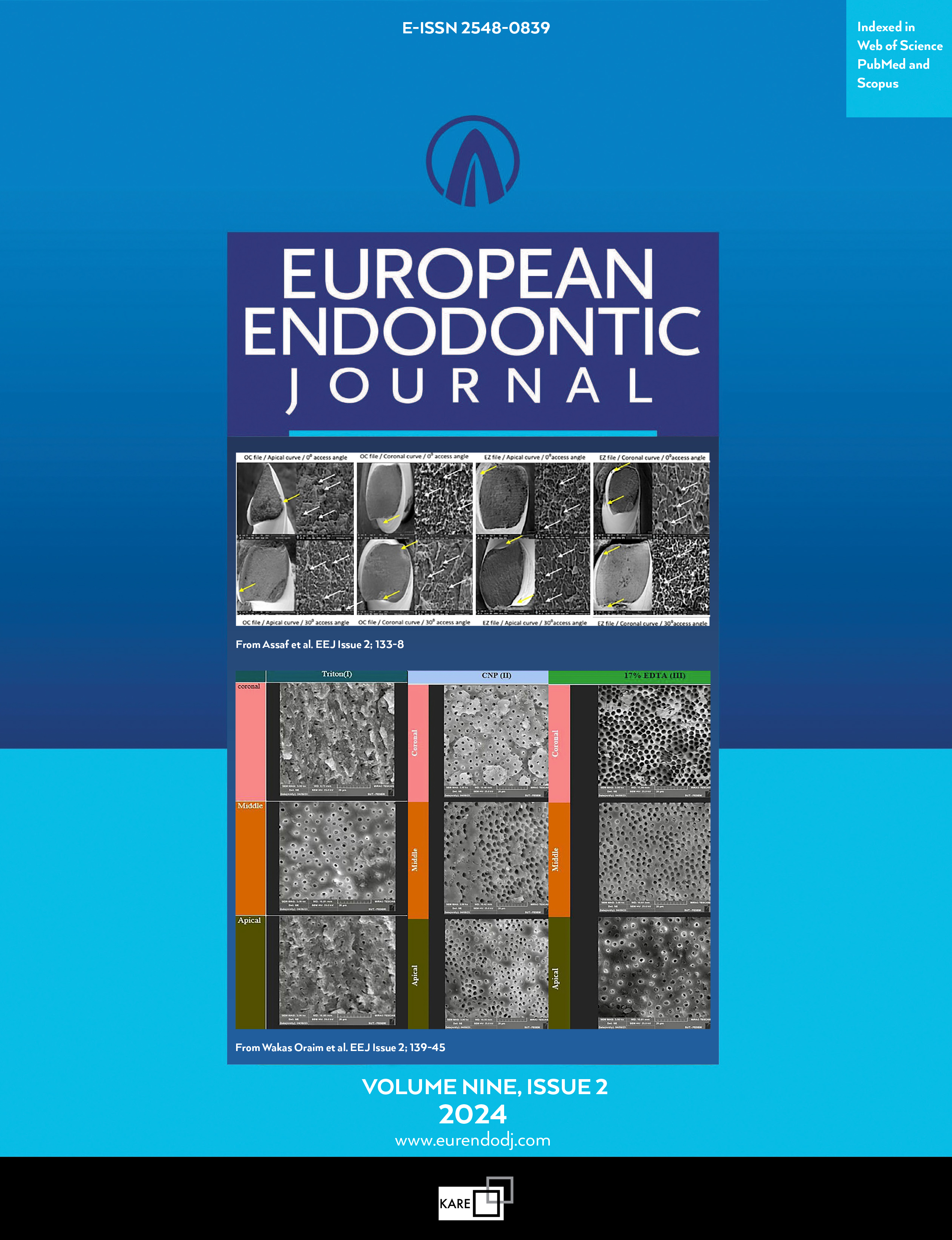Metrics
2022 IMPACT FACTOR
5 year Impact Factor
Eigenfactor
2022 CiteScore
Journal Citation Reports (Clarivate, 2023)(Dentistry, Oral Surgery & Medicine (Science))
The Outcome of GaAlAs Diode Laser (980 Nm) Pulpotomy in Patients with Symptomatic Irreversible Pulpitis Assessed Using CBCT Randomised Controlled Trial with an 18-Month Follow-up
Dharshya Swetha, Suma Ballal, Sathish Sundar, Aishwarya Vasudevan, Velmurugan NatanasabapathyDepartment of Conservative Dentistry and Endodontics, Faculty of Dentistry, Meenakshi Ammal Dental College and Hospital, Meenakshi Academy of Higher Education and Research (MAHER), Chennai, IndiaObjective: To evaluate the effect of diode laser (GaAlAs-980 nm) for full coronal pulpotomy (FCP) compared to conventional crown pulpotomy (CCP) in mature teeth with symptomatic irreversible pulpitis (SIP) and assess dentine bridge formation after FCP using CBCT.
Methods: A total of 86 patients (43 per group) with SIP in permanent mandibular molars were included. Access opening and FCP were done, after which haemostasis was achieved with 2.5% NaOCl in the CCP group and a diode laser (GaAlAs-980 nm) in the laser crown pulpotomy group (LCP). Biodentine (Septodont, Saint-Maur-des-Fossés, France) was placed, and the cavity was sealed. Clinical and radiographic follow-ups were done at 6, 12, and 18 months, with additional CBCT evaluation at 18 months. Statistical analysis was performed using the Mann-Whitney U test, and survival rates were assessed using Kaplan-Meier analysis. The Cox proportional model was used to determine the effect of possible covariates on pulpotomy outcomes. P<0.05 was considered to be statistically significant.
Results: The overall success rate for CCP and LCP at 18 months was 88.4% and 93% respectively. At the end of 18 months, 8 cases (5 in CCP, 3 in LCP) failed. The postoperative pain score at 48 hours was significantly higher for CCP (mean ± standard deviation: 1.7±1.4; p<0.001). CBCT analysis at 18 months revealed thicker dentine bridge formation for LCP (Median & IQR: 0.89, 1.06) compared to CCP (p=0.0479). The Kaplan-Meier curve showed a more rapid decline in the survival rate of CCP (0.89) compared to that of LCP (0.93). Postoperative pain at 48 hours, PAI scores at 6, 12, 18 months, and age were found to affect the hazard ratio based on the Cox regression model.
Conclusion: Within the limitations of this trial, there was no significant difference in the outcome between diode laser and conventional pulpotomy. However, LCP resulted in lesser postoperative pain at 48 hours and thicker dentine bridge formation at 18 months, with a longer estimated survival rate. (EEJ-2023-01-011)
Corresponding Author: Velmurugan Natanasabapathy
Manuscript Language: English
(293 downloaded)


